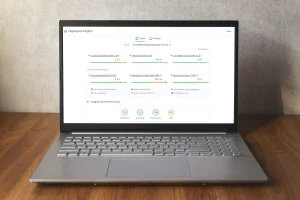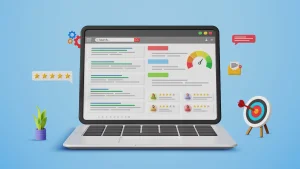SEO Ranking Factors: Best Must-Have SEO Tips You Missed
What Are SEO Ranking Factors, Really?
At a high level, SEO ranking factors are signals search engines use to evaluate relevance, quality, and usability. They span content, technical health, links, and user experience.
Google’s systems look for pages that match intent, demonstrate expertise, and deliver a fast, secure experience. Your job is to make those signals obvious and consistent across your site.
Core SEO Ranking Factors You Can’t Ignore
Start with the essentials. If these aren’t covered, no amount of promotion will stick.
- Crawlability & indexation: Ensure search bots can discover and index your pages. Fix robots.txt, XML sitemaps, and canonical tags.
- Content relevance & intent match: Target clear queries with content that directly answers the user’s need.
- E-E-A-T signals: Showcase experience, expertise, author credentials, and transparent sourcing, especially for YMYL topics.
- Page experience basics: Mobile-friendly layouts, secure HTTPS, and quick loading enhance trust and usability.
These SEO ranking factors form the baseline. Nail them, then layer on advanced tactics.
Technical SEO Ranking Factors That Compound
Technical foundations amplify or blunt your content quality. A few key SEO tips here pay dividends across the site.
Site Speed and Core Web Vitals
Fast pages reduce friction and abandonment. Aim for sub-2.5s Largest Contentful Paint and minimal layout shift. Use image compression (AVIF/WebP), server-side caching, and code splitting.
While Google notes page experience is not a standalone “ranking system,” performance and UX still influence visibility and user satisfaction, which supports stronger outcomes. See Google’s Search Essentials for current guidance.
Mobile-First and Clean Architecture
Google primarily indexes the mobile version. Ensure parity between desktop and mobile content, structured data, and internal links. Keep site architecture shallow so key pages are within three clicks of the homepage.
HTTPS and Security Signals
HTTPS is table stakes. Migrate any legacy HTTP endpoints and fix mixed-content errors. Users and browsers expect secure experiences.
Schema Markup and Rich Results
Structured data clarifies entities, relationships, and attributes for search engines. Use Schema.org for articles, products, FAQs, how-tos, and reviews to earn rich results and improve CTR.
These technical SEO ranking factors quietly boost crawl efficiency, relevance understanding, and engagement metrics that support durable rankings.
Content Quality: The Highest-Leverage Ranking Factor
Crafting content that solves the user’s problem better than anyone else is the ultimate SEO lever. The best SEO tips here focus on clarity, coverage, and credibility.
Match Intent and Own the Topic
Analyze top-ranking pages to infer search intent (informational, transactional, navigational). Build content that fully covers the question with examples, visuals, and steps.
- Use clear H2/H3s aligned to sub-intents and related questions.
- Answer “People also ask” queries succinctly within the page.
- Include FAQs to capture long-tail variations and featured snippets.
Demonstrate E-E-A-T
Add author bios with credentials, link to primary sources, and document your methodology. Use real screenshots, data, and case studies to show firsthand experience.
Refresh and Consolidate
Outdated content is a silent ranking killer. Refresh statistics and examples quarterly and consolidate thin, overlapping pages. One comprehensive resource often outranks several short posts.
Of all SEO ranking factors, content that proves experience and utility is the most defensible advantage.
Link Signals: External Authority and Internal Equity
Backlinks remain powerful, but quality and relevance beat raw counts. Build links from contextually relevant pages on trusted domains.
Editorial Backlinks Over Quantity
Earn links via unique data, tools, original research, and expert commentary. Guest contributions and digital PR can seed coverage, but avoid manipulative schemes.
Internal Linking: Your Most Underrated SEO Tip
Thoughtful internal links clarify topic relationships and pass authority to priority pages. Map a hub-and-spoke structure where pillar pages link to detailed subtopics and vice versa.
- Use descriptive, varied anchor text that matches subtopics.
- Surface orphan pages in navigation and contextual sections.
- Update older high-traffic posts to link to newer resources.
As SEO ranking factors go, internal linking is a quick win with compounding gains.
On-Page Optimization That Still Moves Rankings
On-page basics are easy to overlook in the rush to publish. These SEO tips ensure every page is optimized to compete.
- Title tags: Lead with the primary keyword, promise a benefit, and keep to ~55–60 characters.
- Meta descriptions: Use action-oriented copy and a secondary keyword to improve CTR.
- Headings: Use H1 once, then H2/H3 to mirror a logical outline and capture related terms.
- Entity coverage: Include synonyms, entities, and semantic variations to build topical authority.
- Media optimization: Compress images, add descriptive alt text, and lazy load below-the-fold assets.
These small, consistent optimizations help align with SEO ranking factors and improve both discoverability and engagement.
Behavioral Signals: What Really Matters
Many marketers assume click-through rate, bounce rate, and dwell time are direct SEO ranking factors. Google has clarified it does not use Google Analytics metrics for rankings.
However, pages that attract clicks and satisfy users tend to earn more links, brand queries, and repeat visits. Focus on compelling snippets, above-the-fold clarity, and scannable formatting to encourage deeper engagement.
Local and Commercial Intent Ranking Factors
If you serve local markets, optimize Google Business Profile, consistent NAP, localized landing pages, and reviews. Proximity, relevance, and prominence influence local pack visibility.
For ecommerce and SaaS, prioritize category page UX, high-quality product imagery, comparison content, and trust signals (reviews, guarantees, transparent pricing).
These specialized SEO ranking factors align with user expectations in different SERP surfaces.
Emerging Trends: Helpful, Experience-Driven Content
Google continues to emphasize helpful content and experience. Content that demonstrates real-world use, measured outcomes, and transparent sourcing stands out.
As AI-generated text proliferates, unique data, case studies, and proprietary frameworks become competitive moats. Invest in original research and expert interviews to differentiate.
A 6-Step Prioritization Framework for SEO Ranking Factors
To avoid getting overwhelmed, prioritize SEO ranking factors that deliver outsized ROI.
- Fix indexation: Resolve robots.txt, noindex, and canonical conflicts. Submit XML sitemaps.
- Stabilize performance: Address Core Web Vitals regressions on top-traffic templates first.
- Upgrade top pages: Refresh and expand your top 20% traffic pages to improve intent coverage and internal links.
- Strengthen site architecture: Build pillar pages and interlink clusters with descriptive anchors.
- Acquire authority links: Launch one asset per quarter designed to earn editorial links.
- Measure and iterate: Track rankings, organic clicks, and conversions at the page and cluster level.
Case Study: From Stagnant to 2x Organic Traffic in 90 Days
A B2B SaaS blog stuck at ~20k monthly organic visits prioritized four SEO ranking factors: indexation fixes, speed, content refreshes, and internal linking.
- Removed 600 thin pages and redirected duplicates to canonical resources.
- Compressed hero images, deferred third-party scripts, and implemented server caching.
- Updated 15 legacy articles with new data, examples, and FAQs; added schema.
- Built a hub for “security compliance” with 12 spokes; added contextual links from top posts.
Result: 2x organic sessions and 47% more demo requests in three months, largely from improved rankings across mid-funnel keywords. The lift came without any new backlinks, underscoring the power of on-site SEO ranking factors.
Myths to Ditch About SEO Ranking Factors
- Myth: “Word count is a ranking factor.” Reality: Depth matters, not length alone.
- Myth: “Exact-match keywords in every heading beat intent.” Reality: Over-optimization hurts readability and can backfire.
- Myth: “More pages equal more traffic.” Reality: Quality and consolidation usually outperform volume.
- Myth: “Meta keywords help.” Reality: They are ignored by modern search engines.
21 Must-Have SEO Tips You Probably Missed
Use this checklist to capture overlooked SEO ranking factors and quick wins.
- Add “last updated” dates and explain what changed to improve freshness perception.
- Place a concise, benefit-led summary near the top for skimmers and featured snippets.
- Use a table of contents with jump links; Google may show sitelinks in SERPs.
- Answer the primary query in the first 150 words to reduce pogo-sticking.
- Map every page to a target query and a cluster; kill or consolidate strays.
- Implement FAQ schema on pages with common questions; monitor impressions in Search Console.
- Add author bios with credentials and LinkedIn/Twitter links for E-E-A-T.
- Use original charts or screenshots to attract natural citations and links.
- Compress and convert images to next-gen formats; target
- Remove or defer non-critical third-party scripts that block rendering.
- Standardize internal anchor text to reflect subtopics and entities.
- Add related articles modules to reduce bounce and increase crawl paths.
- Localize spelling and examples for regional SERPs where relevant.
- A/B test titles and meta descriptions to lift CTR without changing rankings.
- Use content briefs that specify intent, angle, and required entities.
- Create comparison pages (X vs. Y) to capture bottom-funnel traffic.
- Add pricing and ROI calculators to earn links and satisfy evaluators.
- Repurpose high-performing blog content into video or infographic formats for extra reach.
- Add review and rating schema to boost visibility and click-through for products or services.
- Monitor “People Also Ask” and autocomplete suggestions to identify new subtopics.
- Refresh internal links on top-ranking pages quarterly to point toward priority URLs.
- Leverage seasonal or event-based landing pages to capture temporary but high-intent search traffic.
Mastering SEO ranking factors isn’t about chasing every shiny tactic—it’s about building a consistent, scalable system that aligns with how search engines evaluate quality and how real people consume content. By focusing on the fundamentals first, layering in advanced techniques, and continuously measuring what works, you’ll create a site that not only ranks but converts. In the long run, the sites that win aren’t just optimized for algorithms—they’re designed to deliver the best possible experience for the people behind the clicks.



